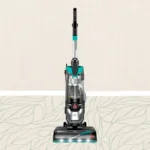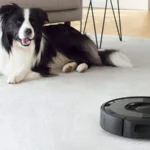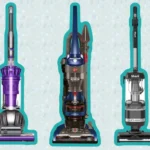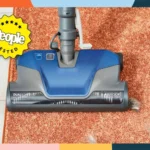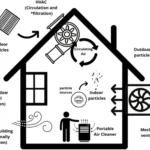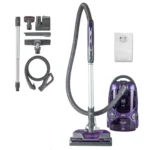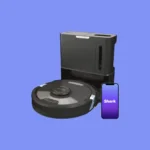The Basics of Asthma and Allergies
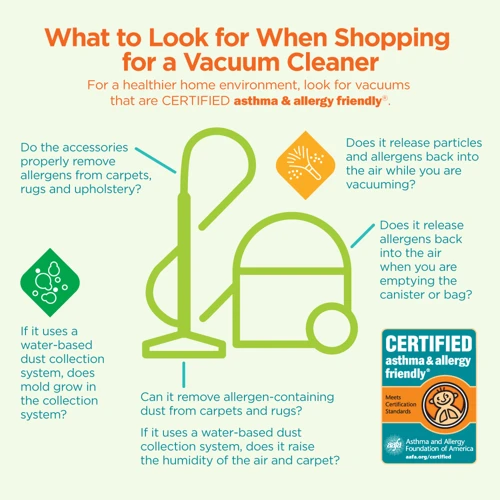
Living with asthma and allergies can be a daily struggle, and it’s important to understand the basics of these conditions in order to manage their symptoms effectively. Asthma is a chronic respiratory disease that affects the airways, causing inflammation and narrowing of the air passages, while allergies result from the immune system’s overreaction to certain substances known as allergens, such as dust mites, pet dander, and pollen. These conditions can be triggered by a variety of factors, from environmental irritants to stress and physical activity. In the following sections, we will discuss how smart vacuum cleaners can help reduce asthma and allergy symptoms by improving air quality and reducing exposure to triggers.
Understanding Asthma and Allergies
Asthma and allergies are two common health conditions that can cause discomfort and sometimes lead to serious health concerns. Asthma is a chronic respiratory condition that causes the airways to become inflamed and narrow. This makes it difficult for air to pass through and can lead to wheezing, coughing, and shortness of breath. Asthma can be triggered by a variety of factors such as exercise, pollution, and allergens.
Allergies, on the other hand, are caused by a hypersensitive immune system that reacts to ordinarily harmless substances such as pollen, dust, and pet dander. The body’s immune response leads to symptoms such as runny nose, itchy eyes, and sneezing. Some individuals may also experience skin reactions such as hives or eczema.
Both asthma and allergies can be frustrating and disruptive to daily life. Depending on the severity of the symptoms, they can also be dangerous if left untreated. Fortunately, there are many effective treatments that can help alleviate symptoms and improve overall quality of life.
One of the most important steps in the management of asthma and allergies is identifying and avoiding triggers. Common allergens include dust mites, pollen, mold, and pet dander. Exposure to these allergens can cause symptoms to flare up, leading to discomfort and in some cases, medical emergencies.
In addition to reducing exposure to triggers, effective cleaning of the home environment is also crucial for managing asthma and allergies. Traditional cleaning methods such as manual sweeping and vacuuming can be effective to some extent, but they have their limitations. It can be challenging to remove all the dust and debris, especially in hard-to-reach areas. Additionally, these methods can lead to the redistribution of allergens into the air, exacerbating symptoms.
Smart vacuum cleaners offer an excellent solution for managing asthma and allergies by providing efficient and thorough cleaning. Their unique features and benefits make them a valuable addition to any home that wants to improve air quality and reduce exposure to triggers. For more information about the benefits of quiet smart vacuum cleaners for allergies and asthma, check out our article on the best quiet vacuum cleaners for allergies and asthma.
Common Triggers
Asthma and allergies can be triggered by a variety of factors.Common triggers include:
- Pollen: Pollen is produced by trees, grasses, and weeds and can be carried in the air for miles. It can trigger allergic reactions in people with sensitive respiratory systems.
- Dust Mites: Dust mites are a common indoor allergen. They thrive in warm, humid environments, such as bedding, carpets, and upholstery.
- Pet Dander: Pet dander is made up of tiny particles of skin, hair, and saliva from cats, dogs, and other household pets. It can trigger allergic reactions in some people.
- Mold: Mold spores are a common allergen found indoors and outdoors. They thrive in damp environments, such as bathrooms and basements.
- Cigarette Smoke: Cigarette smoke can trigger asthma symptoms and other respiratory problems.
These triggers can be difficult to eliminate completely, but taking steps to reduce your exposure can help alleviate symptoms. One effective way to reduce exposure to indoor allergens is through the use of a quiet smart vacuum cleaner.
Traditional Cleaning Methods and Their Limitations
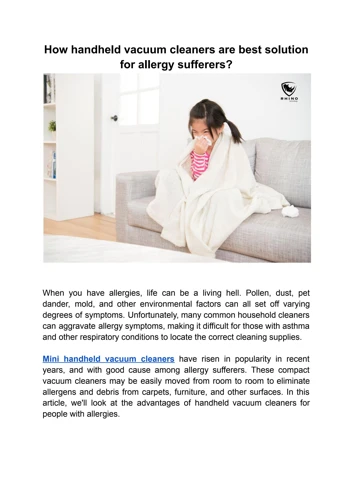
When it comes to keeping a clean home, traditional cleaning methods like manual sweeping and vacuuming have been a go-to for many years. However, these methods also have their limitations, especially for those with asthma and allergies. Not only can they kick up airborne dust and debris, but they may also fail to effectively remove all triggers from the environment. In order to alleviate these issues, it may be time to consider upgrading to a smart vacuum cleaner. These cutting-edge devices have revolutionized the way we clean our homes, and can make a significant difference in reducing asthma and allergy symptoms. Let’s take a closer look at why traditional cleaning methods fall short, and why it’s time to consider a smarter approach to cleaning. If you want to learn about quiet smart vacuums that can help with allergies and asthma, check out our article Best Quiet Vacuum for Allergies.
Manual Sweeping and Vacuuming
Traditional cleaning methods, such as manual sweeping and vacuuming, may seem like effective ways to rid a home of dust and debris, but they can actually exacerbate asthma and allergy symptoms. Here’s why:
– Stirring up dust: When sweeping or dry vacuuming floors and surfaces, a significant amount of dust and other debris is kicked up into the air, making it easier for those particles to be inhaled.
– Inefficient cleaning: While traditional cleaning methods can remove some visible debris on surfaces, they often fall short in removing smaller particles such as pet dander, pollen, and dust mites.
– Limited reach: Despite efforts to sweep and vacuum thoroughly, certain areas such as corners, baseboards, and crevices are difficult to clean effectively without specialized equipment.
In addition to these limitations, manual cleaning can also be physically taxing for those with asthma and allergies, as dust and allergens are stirred up into the air and can trigger respiratory symptoms.
To combat these challenges, many people turn to smart vacuum cleaners. These innovative devices have emerged as a powerful tool for cleaning homes while minimizing the risks of triggering asthma and allergy symptoms.
Airborne Dust and Debris
Manual sweeping and vacuuming have been the go-to cleaning methods for years, but they have their limitations when it comes to reducing asthma and allergy symptoms. Airborne dust and debris, in particular, trigger symptoms for many people, yet they are often simply redistributed through the air when traditional cleaning methods are used.
Manual Sweeping: Sweeping with a broom may seem like a quick and easy solution, but it actually stirs up dust particles that can linger in the air for hours. When you sweep, you also push dust and debris under furniture and into corners, making it difficult to remove.
Traditional Vacuuming: Traditional vacuums use a brush to agitate the carpet, which can move settled dust and allergens back into the air. Dust and debris can also escape through any cracks or gaps in the vacuum. Emptying the vacuum’s dustbin can also be a problem, as the dust and allergens that have been collected can be released back into the air.
Traditional methods create more problems than they solve when it comes to reducing asthma and allergy symptoms. That’s where smart vacuum cleaners come in.
If you’re interested in finding the best quiet vacuum for allergies that won’t disturb your household, check out our article on the top models on the market.
How Smart Vacuum Cleaners Work
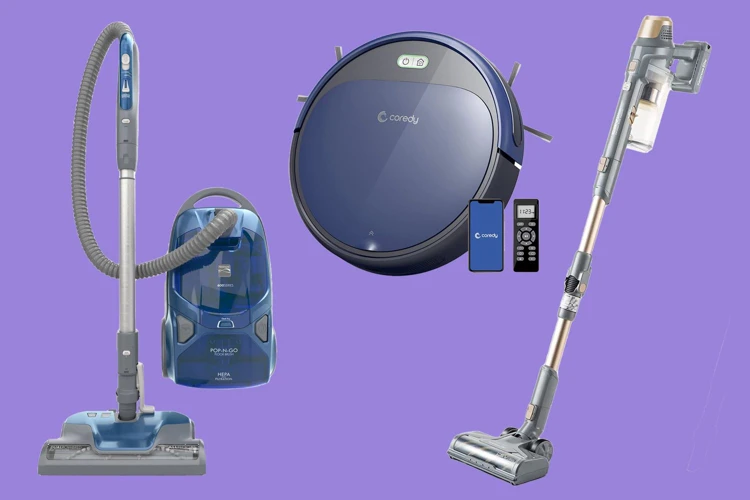
Have you ever wondered how smart vacuum cleaners actually work? These futuristic devices are not just your average vacuum cleaner; they use advanced technology to revolutionize the way people clean their homes. Instead of relying on manual labor and basic suction power like traditional vacuums, smart vacuums utilize a complex system of sensors, motors, and brushes to navigate and clean your space intelligently. In this section, we’ll dive into the inner workings of smart vacuum cleaners and explore what sets them apart from their traditional counterparts.
What Sets Them Apart
Smart vacuum cleaners are the latest innovation in the cleaning industry, designed to make the process of cleaning not just convenient but also efficient. The following are some of the key features that set them apart from traditional vacuum cleaners:
Cutting-Edge Technology: Smart vacuum cleaners are equipped with the latest technology, including sensors, cameras, and intelligent mapping systems. These features allow them to navigate through a room with ease and pick up dirt, dust, and debris, even in hard-to-reach places.
Wireless Connectivity: Smart vacuum cleaners can be connected to your smartphone or other devices, allowing you to control their functions remotely. You can set cleaning schedules, change cleaning modes, and even monitor the status of the device from the comfort of your couch.
Voice Control: Some smart vacuum cleaners can be controlled using voice commands, making them incredibly easy to use. You can instruct the device to start cleaning or to return to its docking station without having to lift a finger.
Energy Efficiency: Smart vacuum cleaners are designed to be energy-efficient, using minimal power to get the job done. They typically have a longer battery life than traditional vacuum cleaners, allowing them to clean larger areas without needing to be recharged.
Advanced Filtration Systems: Smart vacuum cleaners have advanced filtration systems that can capture even the smallest particles, including allergens and bacteria. This makes them an excellent choice for those with asthma or allergies, as they can help to reduce exposure to triggers.
Smart vacuum cleaners offer a range of advanced features that make cleaning easier, more efficient, and more effective. While they may be more expensive than traditional vacuum cleaners, they are well worth the investment for anyone looking for a superior cleaning experience.
Key Features and Benefits
Smart vacuum cleaners are designed to make cleaning easier, more efficient, and more effective. Here are some of the key features and benefits that make them a worthwhile investment for anyone looking to reduce asthma and allergy symptoms:
- HEPA filters: Many smart vacuum cleaners come with high-efficiency particulate air (HEPA) filters, which can capture tiny particles like pet dander, pollen, and even some viruses.
- Multi-surface cleaning: Smart vacuum cleaners can adjust their suction power and cleaning settings to work on a variety of surfaces, from carpets to hardwood floors.
- Intelligent mapping: Some smart vacuum cleaners can map out your home and use sensors to navigate around obstacles, ensuring efficient and thorough cleaning.
- Automatic docking and recharging: Smart vacuum cleaners can automatically return to their docking station when they need to recharge, so you don’t have to worry about manually plugging them in.
- Remote control: Many smart vacuum cleaners can be controlled through a smartphone app, giving you the ability to start or stop cleaning sessions from anywhere.
These key features can offer many benefits when it comes to reducing asthma and allergy symptoms. The HEPA filter, for example, can help to capture the pollen, dust mites, and other common allergens that can trigger asthma or allergy attacks. The multi-surface cleaning capabilities mean that the vacuum can be used on all types of flooring, which is especially beneficial for people who have asthma or allergies triggered by dust or dirt.
Additionally, the intelligent mapping system and automatic docking and recharging feature can help to ensure that your home is always clean, without you having to lift a finger. And the ability to control your vacuum cleaner remotely means that you can start cleaning sessions when you’re out of the house, ensuring that you’re always coming home to a clean and healthy environment.
The Benefits of Smart Vacuum Cleaners for Asthma and Allergies
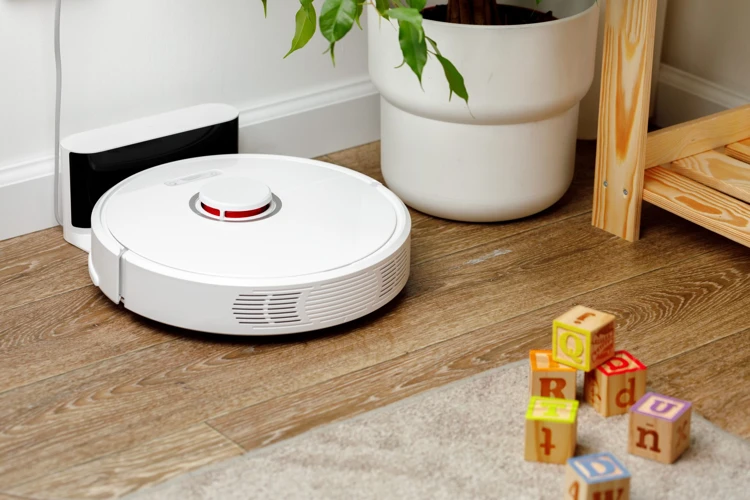
As we have discussed in the previous section, traditional cleaning methods may not be effective in reducing asthma and allergy triggers in your home. However, there is a solution that can help alleviate these concerns – smart vacuum cleaners. These innovative devices come with a range of benefits that can significantly improve indoor air quality and reduce exposure to common triggers. Let’s dive into the specific advantages of using a smart vacuum cleaner for those with asthma and allergies.
Improved Air Quality
Perhaps one of the most significant benefits of using smart vacuum cleaners is the improved air quality they provide for individuals with asthma and allergies. By removing dust, pet dander, and other allergens from the air and surfaces throughout your home, smart vacuums can make a noticeable impact on the quality of the air you breathe.
Here’s how smart vacuums improve air quality:
- Filtration: Smart vacuums come equipped with advanced filtration systems that capture even the smallest particles, such as pollen, mold spores, and bacteria. HEPA (High-Efficiency Particulate Air) filters are particularly effective at capturing these particles, as they can remove up to 99.97% of particles as small as 0.3 microns in size.
- Robot Navigation: Many smart vacuums use advanced sensors and mapping technology to navigate your home more efficiently, ensuring that every nook and cranny is cleaned thoroughly. This means that even hard-to-reach areas, such as under furniture and in corners, are effectively cleaned, reducing the amount of airborne allergens in your home.
- Less Dust Stirring: Traditional vacuum cleaners can actually stir up dust and allergens, making them more airborne instead of eliminating them. Smart vacuums, on the other hand, are designed with features like side brushes and rubber rollers to prevent this from happening. They can pick up dust without stirring it up, leading to a cleaner and healthier home environment.
By improving the air quality in your home, smart vacuum cleaners can help alleviate asthma and allergy symptoms, allowing you to breathe easier and live more comfortably.
Reduced Exposure to Triggers
Smart vacuum cleaners can help reduce exposure to triggers that cause asthma and allergies. They do this by effectively removing various allergens and irritants from the air and surfaces. Here are some ways in which smart vacuum cleaners reduce exposure to triggers:
1. Efficient filtration: Smart vacuum cleaners use advanced filters to trap even the smallest particles from the air and surfaces. These filters can capture dust mites, pollen, pet dander, and other allergens that trigger asthma and allergies. Some models also have HEPA filters that can remove up to 99.97% of particles as small as 0.3 microns.
2. Effective suction power: Smart vacuum cleaners have powerful motors that create strong suction to pick up and remove dirt, dust, and debris from carpets, rugs, and other surfaces. This reduces the amount of allergens and irritants that are present in your home, which can lead to fewer asthma and allergy symptoms.
3. Smart sensors: Some smart vacuum cleaners have sensors that detect the presence of dust, dirt, and other allergens in the air and on surfaces. They can adjust their suction power or cleaning patterns to effectively remove these allergens, reducing your exposure to triggers.
4. Reduced human contact: Traditional cleaning methods often involve manually sweeping or vacuuming, which can stir up allergens and spread them in the air. Smart vacuum cleaners can operate autonomously, reducing human contact and minimizing the risk of exposure to allergens and irritants.
Smart vacuum cleaners can greatly benefit those who suffer from asthma and allergies by reducing their exposure to triggers. With efficient filtration, powerful suction, smart sensors, and reduced human contact, smart vacuum cleaners offer a comprehensive and effective solution for improving indoor air quality and reducing asthma and allergy symptoms.
Efficient Cleaning
When it comes to cleaning, reliability and efficiency are key factors to consider. Smart vacuum cleaners, such as the Roomba and Dyson 360 Eye, are designed with sophisticated technology systems that ensure thorough and effective cleaning of your home. Here are some of the ways in which smart vacuum cleaners are able to clean efficiently:
- Scheduling: One of the most innovative features of smart vacuum cleaners is the ability to schedule cleaning sessions. You can program your vacuum to clean at a certain time each day, ensuring that your floors stay clean and dust-free.
- Mapping Technology: Smart vacuums use advanced sensors and cameras to scan and map out the room prior to cleaning. This allows the vacuum to know exactly where it has cleaned, and where it still needs to clean.
- Navigation: With the help of mapping technology, smart vacuums have the ability to navigate around obstacles and furniture, making sure no spot is missed during the cleaning cycle.
- Cleaning Modes: Smart vacuums have different cleaning modes, such as spot cleaning and edge cleaning, that focus on areas that need more attention. This allows for a more efficient cleaning process, as the vacuum is able to give more attention to areas that require it, rather than just cleaning the entire room uniformly.
- Powerful Suction: Smart vacuums have high suction power, which allows them to pick up debris and dirt more effectively. This is critical for people with allergies, as it helps ensure that allergens are removed from the home.
The efficiency of smart vacuum cleaners is unmatched. Through advanced technology and unique features, they are able to effectively clean your home, helping to reduce asthma and allergy symptoms. By investing in a smart vacuum, you can ensure that your home stays clean and allergen-free, without having to lift a finger.
Choosing the Right Smart Vacuum Cleaner
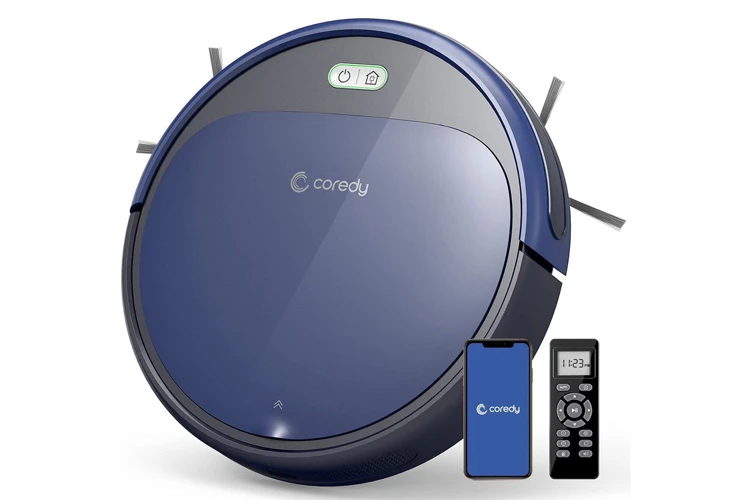
As you delve into the world of smart vacuum cleaners, it’s important to choose the right one for your needs. With so many options on the market, it can be overwhelming to decide which one is the best fit for you. Consider factors like your budget, the size of your home, and any specific cleaning needs you might have. In this section, we’ll explore some tips and tricks for choosing the perfect smart vacuum cleaner to help reduce asthma and allergy symptoms in your home.
Factors to Consider
When choosing a smart vacuum cleaner for asthma and allergy relief, there are several factors to consider. Here are some important considerations to keep in mind before making a purchase:
- Filtration System: Look for a vacuum cleaner with a high-quality filtration system to trap allergens and ensure that they don’t escape back into the air. The best filters for allergy sufferers are HEPA filters, which can capture up to 99.97% of particles as small as 0.3 microns.
- Suction Power: The suction power of the vacuum cleaner is important as it determines how effectively it can pick up dirt, dust, and other allergens. A higher suction power means that the vacuum cleaner can pick up more dirt and dust, and also helps to remove pet hair more efficiently.
- Brush Roll: Vacuum cleaners with brush rolls are great for deep cleaning carpets and upholstery, but they can also stir up allergens and release them into the air. Look for vacuum cleaners with brush rolls that can be turned on and off to avoid this issue.
- Smart Features: Smart vacuum cleaners come with a range of features that can improve their performance and make cleaning easier. Some of these features include voice control, smartphone app control, and auto-recharge capabilities.
- Battery Life: If you have a large home or need to clean several rooms in one go, look for a vacuum cleaner with a long battery life. This will ensure that you can clean without needing to stop and recharge the vacuum cleaner too often.
- Noise Level: If you plan to use your smart vacuum cleaner while at home, consider the noise level. Some vacuum cleaners are very loud and can be disruptive, while others are designed to be quieter.
By considering these factors, you’ll be able to find a smart vacuum cleaner that is tailored to your needs and will help reduce asthma and allergy symptoms.
Top Models on the Market
There are many smart vacuum cleaners available in the market, each with unique features and technology. Here are some top models that have caught the attention of consumers:
| Model | Key Features | Price Range |
|---|---|---|
| Dyson V11 | Powerful suction, LCD screen, interchangeable battery, whole-machine filtration | $$$ |
| iRobot Roomba i7+ | Smart mapping, automatic dirt disposal, personalized cleaning schedule, dual multi-surface rubber brushes | $$$ |
| Shark IQ Robot Vacuum | Self-cleaning brushroll, IQ Navigation, voice control compatibility, bagless dust bin | $$ |
| Eufy RoboVac 11S Max | Quiet operation, slim design, drop-sensing technology, 100-minute runtime | $ |
The Dyson V11 is a popular choice due to its powerful suction and advanced filtration, making it great for allergy sufferers. Its LCD screen displays real-time battery life and alerts users when it’s time to clean. However, its high price tag may not be feasible for everyone.
The iRobot Roomba i7+ features intelligent mapping technology to ensure efficient cleaning, and its automatic dirt disposal system minimizes contact with allergens. It also allows for personalized cleaning schedules, making it convenient for busy households. However, its high price may not fit everyone’s budget.
The Shark IQ Robot Vacuum is a more affordable option that still boasts impressive features such as self-cleaning brushrolls and voice control compatibility with Amazon Alexa and Google Assistant. Its IQ Navigation technology ensures thorough cleaning in every corner of the room.
Lastly, the Eufy RoboVac 11S Max provides a quiet and slim design, making it a great option for small apartments or busy households. Its drop-sensing technology prevents it from falling down stairs or off ledges, and its 100-minute runtime allows for extended cleaning sessions.
When choosing a smart vacuum cleaner, it’s important to consider individual needs and budget before making a purchase.
Tips for Getting the Most Out of Your Smart Vacuum Cleaner
Now that you’ve invested in a smart vacuum cleaner to help reduce asthma and allergy symptoms, it’s important to ensure you’re using it effectively. Here are some helpful tips for maximizing the benefits of your smart vacuum cleaner and keeping your home as clean and allergen-free as possible. By following these guidelines, you’ll be able to breathe easier and enjoy a healthier living environment. Let’s dive in!
Cleaning Frequency
One of the most important factors for getting the most out of your smart vacuum cleaner is establishing a regular cleaning frequency. While this will depend on factors such as the size of your home and the number of occupants, it’s generally recommended to vacuum high-traffic areas a few times a week, while less frequently used areas can be vacuumed once a week.
The Benefits of Regular Vacuuming
Regular vacuuming has a number of benefits beyond simply removing dust and debris from your floors. In fact, it can help to improve indoor air quality by removing allergens and pollutants that can exacerbate asthma and allergy symptoms. Additionally, regular vacuuming with a high-quality smart vacuum cleaner can improve the overall cleanliness and appearance of your home.
Factors to Consider
When establishing your cleaning frequency, it’s important to consider a number of factors. For example, if you have pets or smokers in the home, you may need to vacuum more frequently. Similarly, if anyone in the home suffers from allergies or asthma, more frequent vacuuming can be beneficial.
Maximizing the Effectiveness of Your Smart Vacuum Cleaner
In addition to establishing a regular cleaning frequency, there are a number of other steps you can take to maximize the effectiveness of your smart vacuum cleaner. For example, make sure that the dustbin is emptied and the filter is cleaned or replaced regularly. This will help to ensure that the vacuum is working at peak efficiency and won’t become clogged with debris.
Final Thoughts
By establishing a regular cleaning frequency and taking steps to ensure that your smart vacuum cleaner is working at its best, you can enjoy the many benefits of improved indoor air quality and a cleaner, more comfortable home environment. With so many high-quality smart vacuum cleaners on the market today, there’s never been a better time to embrace this technology and take your home cleaning routine to the next level.
Proper Maintenance
Maintaining your smart vacuum cleaner is essential in ensuring its longevity and optimal performance. Here are some maintenance tips to keep in mind:
- Clean or Replace Filters: The filters in your smart vacuum cleaner can get clogged with dust and debris over time, hindering its suction power. It’s important to clean or replace them regularly to maintain the efficiency of your vacuum cleaner. Check the manufacturer’s instructions on how often filters need to be cleaned or replaced.
- Empty the Dustbin: Make sure to empty the dustbin of your smart vacuum cleaner after every use. Leaving it filled with debris can prevent the vacuum from working efficiently, and can even cause damage to the motor over time.
- Check the Brushroll: The brushroll is an essential component of your vacuum cleaner, and it can become tangled with hair, fur, and other debris. Make sure to clean the brushroll regularly and remove any tangled debris to ensure it can spin freely and maintain its suction power.
- Clean the Sensors: Smart vacuum cleaners rely on sensors to navigate around obstacles and detect dirt. Over time, these sensors can become covered in dust and debris. Wipe them down regularly with a soft cloth to ensure they can continue to function properly.
- Inspect the Wheels: The wheels on your smart vacuum cleaner can also become clogged with dirt and debris. Regularly check them to make sure they can spin freely and are not impeded by any blockages.
By following these maintenance tips, you can keep your smart vacuum cleaner running effectively and ensure it continues to benefit your health by reducing asthma and allergy symptoms.
Smart Vacuum Cleaners and Your Health: Final Thoughts
In conclusion, smart vacuum cleaners can provide a valuable solution for those who suffer from asthma and allergies. These powerful devices are designed to remove the airborne dust and debris that can trigger respiratory problems.
By choosing a smart vacuum cleaner with advanced features such as HEPA filtration, WiFi connectivity, and integrated mapping technology, users can benefit from improved air quality, reduced exposure to triggers, and efficient cleaning.
However, it is important to note that no cleaning method can completely eliminate the risk of asthma and allergies. It is still important to maintain good indoor air quality by regularly changing air filters, controlling humidity levels, and minimizing the use of harsh chemicals.
By incorporating a smart vacuum cleaner into a comprehensive cleaning routine, individuals with asthma and allergies can take an important step towards improving their health and quality of life. With proper maintenance and cleaning frequency, these devices can offer a long-lasting solution to the challenges of indoor air pollution.
If you’re dealing with asthma or allergies and looking for ways to improve your indoor air quality and reduce triggers, investing in a smart vacuum cleaner is an excellent idea. By taking into account the factors to consider and choosing the right model for your needs, you can enjoy cleaner air and a healthier home environment.
Frequently Asked Questions
What is asthma?
Asthma is a chronic respiratory condition characterized by inflammation of the airways, which makes it difficult to breathe.
What are allergies?
Allergies are the immune system’s abnormal response to a substance that is harmless to most people. Common allergens include pollen, dust mites, pet dander, and certain foods.
How do traditional cleaning methods affect asthma and allergy sufferers?
Traditional cleaning methods such as manual sweeping and vacuuming can stir up dust and other allergens, making them airborne and aggravating asthma and allergy symptoms.
How do smart vacuum cleaners work?
Smart vacuum cleaners are equipped with sensors and software that enable them to navigate a room and detect obstacles, and they also have more powerful suction and filtration systems to capture even the smallest particles of dust and other allergens.
What are the key features of smart vacuum cleaners?
Some of the key features of smart vacuum cleaners include Wi-Fi connectivity, voice control, app compatibility, scheduling options, and advanced sensors for mapping and detection.
How can smart vacuum cleaners help reduce asthma and allergy symptoms?
Smart vacuum cleaners can help reduce asthma and allergy symptoms by improving air quality, reducing exposure to triggers, and efficiently cleaning surfaces without stirring up dust or other allergens.
What factors should I consider when choosing a smart vacuum cleaner?
When choosing a smart vacuum cleaner, factors to consider include suction power, filtration systems, navigation capabilities, app compatibility, and price.
What are the top models of smart vacuum cleaners on the market?
Some of the top models of smart vacuum cleaners on the market include the iRobot Roomba, Ecovacs Deebot, Shark Ion, and Neato Botvac.
How often should I use my smart vacuum cleaner?
The frequency of smart vacuum cleaner use depends on the size of the space being cleaned and the level of foot traffic, but a general rule of thumb is to use it at least once a week.
What is proper maintenance for a smart vacuum cleaner?
Proper maintenance for a smart vacuum cleaner includes keeping the dustbin and filters clean, checking the brushes for debris, and replacing worn parts as needed.

